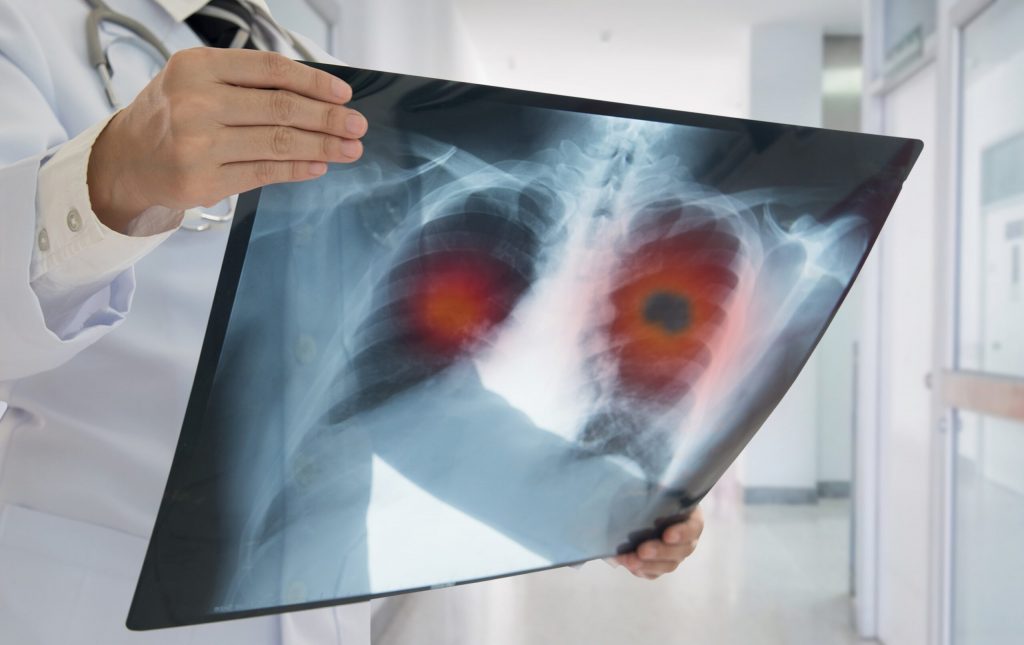Analysis: Lung cancer in non-smokers
Even if smoking is the main risk factor for developing lung cancer, it is not uncommon for people who have never smoked to develop this type of cancer. In an analysis, a cancer research team was able to trace the causes of lung cancer in non-smokers to three genetic signatures.
Researchers at the US National Cancer Institute (NCI) used genome sequencing to characterize three molecular subtypes of lung cancer in people who have never smoked. The findings could lead to the development of more effective clinical treatments for lung cancer in non-smokers. The results of the research were recently published in the famous specialized journal “natural geneticsPosted.
Researching the causes of cancer in the genome
Cancer almost always arises from a series of mutations and errors in the genetic code, which lead to uncontrolled cell growth. In order to know the exact causes of cancer, it is thus necessary to arrange the genomes of cancer cells. Findings like these also offer possible new avenues for treating cancer.
Three subtypes of lung cancer in non-smokers
Genetic analysis of lung cancer in people who have never smoked showed that most of these tumors are caused by the accumulation of mutations caused by natural processes in the body. It showed that there are three subtypes of lung cancer in non-smokers. The findings also help understand how lung cancer develops in non-smokers in the first place.
Cancer researcher and study director, Dr. Maria Theresa Landy. “In the future, we may be able to offer different treatments based on these subtypes,” the epidemiologist predicts.
Lung cancer does not only occur in smokers
As the working group explains, lung cancer is the leading cause of cancer-related deaths worldwide. More than two million people worldwide are diagnosed with the disease each year. Most of those affected are smokers – but up to 20 percent have never smoked. Lung cancer often occurs in non-smokers at an earlier age than in smokers. In addition, women are affected by lung cancer in non-smokers more than men.
Environmental risk factors such as secondhand smoke, exposure to radon, air pollution, exposure to asbestos or previous lung disease can explain some cases of lung cancer in non-smokers—but by no means all. Until now, it is not clear how many lung cancers affect non-smokers.
Genome analysis of lung cancer samples
To illustrate this, the researchers analyzed the genomes of 232 non-smokers with lung cancer. The injured have not yet received treatment for cancer. The working group looked for signatures of mutations in the genome, that is, patterns associated with specific mutation processes. This can be damage from DNA defect repair or oxidative stress, as well as exposure to carcinogens.
Mutation Archive
According to the working group, signatures of mutations allow conclusions to be drawn about the development of cancer, since it is possible to trace how the mutations accumulate in the archive. Cancer Research can now refer to an entire catalog of known mutation signatures, which is constantly expanding.
The damage was mostly of a natural nature
Through the analysis, the researchers showed that most tumor genomes from non-smokers had signals of endogenous damage-induced mutation. This indicates that the processes in the body are normal and cannot be assigned to any external factor.
Sub-genre “Piano”
Lung cancers among non-smokers can be divided into three subtypes. The dominant subtype ‘piano’ shows the fewest number of mutations and progresses slowly. It appears to result from activation of progenitor cells and can have many different driving mutations, making it difficult to treat.
Subtype “Half Strong”
Another subtype of lung cancer called ‘misoforte’. According to the research team, this type of cancer is characterized by specific chromosomal changes and mutations in the EGFR gene. This gene often changes in lung cancer. The change is associated with rapid tumor growth.
subtype “strong”
The ‘Forte’ subtype has been associated with whole genome duplication. This genetic change is often seen in lung cancer in smokers. Like the “miso fortresses,” tumors of this subtype grow rapidly.
Should each subtype be treated differently?
Summarizes Dr. Landy. The slowly growing subtype of piano, for example, can be detected at an early stage using appropriate diagnostic methods. On the other hand, according to Dr. The Mezzo-Forte and Forte subtypes contain only a few major engine mutations. This indicates that sufferers can benefit from targeted therapies.
Are there more cancer subtypes than previously thought?
“We are only at the beginning of our understanding of how these tumors develop,” confirms the study director. The results confirm for the first time that there are differences in lung tumors in non-smokers. The working group believes that investigating the genetic features of a tumor will open up new avenues for discovering different cancer types and subtypes. (FP)
Author and source information
This text complies with the requirements of the specialized medical literature, clinical guidelines and current studies and has been examined by medical professionals.
author:
Diploma Editor (FH) Volker Plasic
Resources:
- National Cancer Institute: NIH study clarifies the origins of lung cancer in non-smokers (veröffentlicht: 06.09.2021), cancer.gov
- Chang T, Joubert F, Ansari Pour N, et al. Genetic and evolutionary classification of lung cancer in smokers and non-smokers; In: Nature Genetics, 2021., Nature.com
- Deutsches Ärzteblatt: Why non-smokers also get lung cancer (published date: 17.09.2021), aerzteblatt.de
important note:
This article is for general guidance only and is not intended to be used for self-diagnosis or self-treatment. It cannot replace a visit to the doctor.

“Total coffee aficionado. Travel buff. Music ninja. Bacon nerd. Beeraholic.”







More Stories
Researchers detect extremely high-energy gamma rays
Anxiety disorders in old age increase the risk of dementia
Researchers are particularly fascinated by these exoplanets.